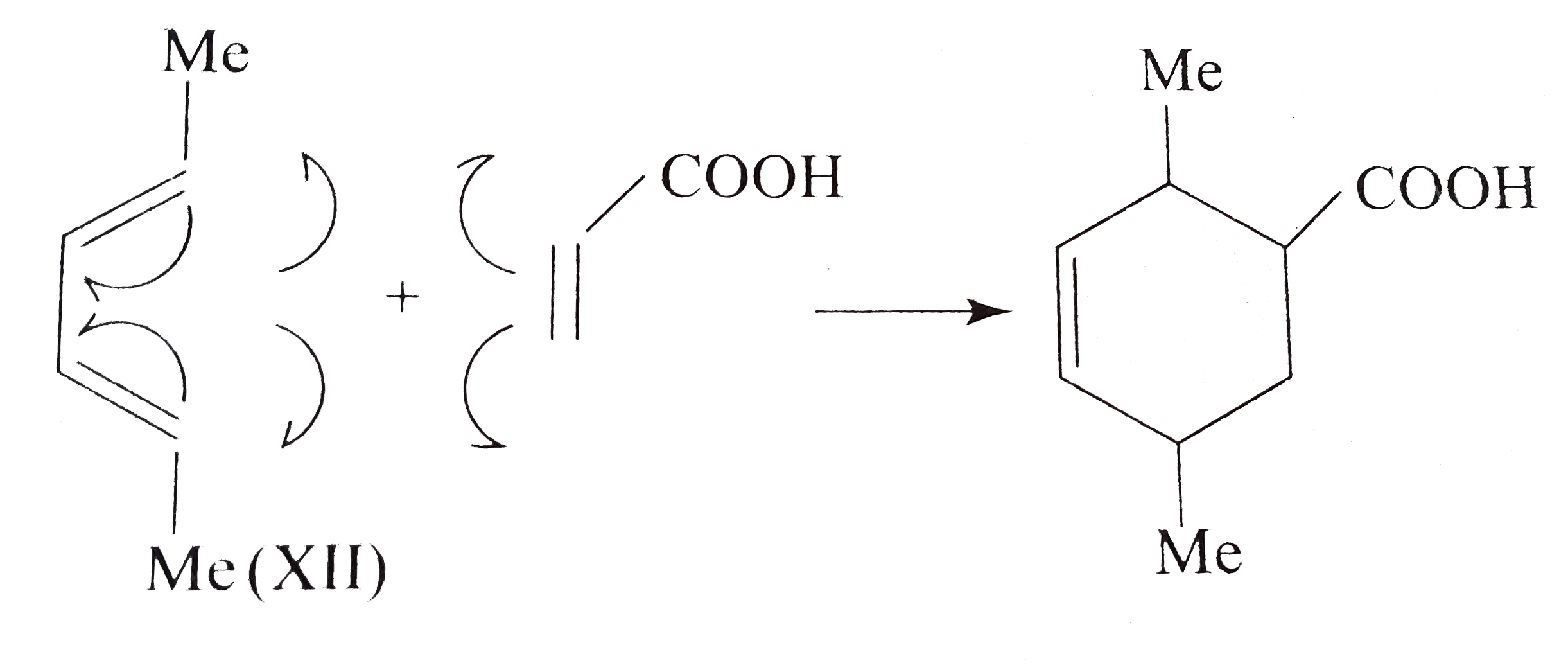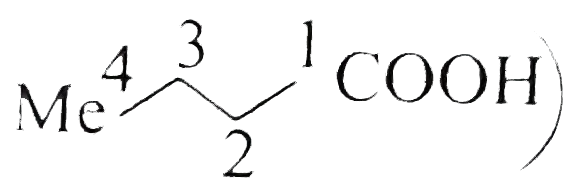The displacement of electrons in a multiple bond in the presence of attacking reagent is called
Video Solution
Text Solution
a. (I) is terminal alkyne and gives white precipitate of  with Ag(NH3)2Cl or red precipitate of
with Ag(NH3)2Cl or red precipitate of  with [Cu(NH3)2]⊕OH⊕, whereas (II), an internal alkyne, does not.
with [Cu(NH3)2]⊕OH⊕, whereas (II), an internal alkyne, does not.
b. (III) is a propargylic bromide and gives a pale yellow precipitate of AgBr with (AgNO1+C2H5OH), whereas (IV) is a vinylic bromide and does not give any reaction with AgNO3.
c. (VI) is unsaturated compound and gives the test for unsaturation, i.e., decolourisation of pink colour of Baeyer's reagent (cold alk. KMnO4) of discharge of reddish brown colour of Br2 solution, whereas (V) is inert.
d. (VII) will react with H2+ Lindlar's catalyst or with H2+P−2 catalyst (Ni2B) to give (VIII), whereas VIII will not react.
Moreover, quantitative catalytic hydrogenation will also distinguish the two, (VII) will require 2 equivalent of H2, whereas (VIII) with require 1 equivalent of H2 per mole of each compound.
e. (X) is a symmetrical alkyne and undergoes oxidative ozoolysis to give a single acid (butanoic acid,  , whereas (IX) gives two separable acids (propanoic acid) + pentanoic acid,
, whereas (IX) gives two separable acids (propanoic acid) + pentanoic acid,  .
.
f. Quantitative catalytic hydrogenation will distinguish the pair. (XI) will absorb 4 equivalent of H2, whereas (XII) will absorb 2 equivalent of H2 per mole of each compound.
Moreover, (XII) will undergo Diels-Alder reaction, whereas (XI) will not.

g. (XIII) is conjugated diene and will undergo Diels-Alder reaction.
h. (XV) has a chiral centre and is resolvable whereas (XVI) is not.
|
Topper's Solved these Questions
- ALKYNESBOOK - CENGAGE CHEMISTRY ENGLISHCHAPTER - ALKYNESEXERCISE - Solved Examples
24 Videos
- ALKYNESBOOK - CENGAGE CHEMISTRY ENGLISHCHAPTER - ALKYNESEXERCISE - Exercises (Subjective Type)
31 Videos
- ALKENES AND ALKADIENESBOOK - CENGAGE CHEMISTRY ENGLISHCHAPTER - ALKENES AND ALKADIENESEXERCISE - Single correct Answer
14 Videos
- APPENDIX - INORGANIC VOLUME 1BOOK - CENGAGE CHEMISTRY ENGLISHCHAPTER - APPENDIX - INORGANIC VOLUME 1EXERCISE - chapter-7 Single correct answer
1 Videos
Similar Questions
Knowledge Check
Shifting of electron of a multiple bond under the influence of a reagent is called :
AI-effectBM-effectCE-effectDT-effect
Presence of RBC in urine is called
View SolutionPresence of RBC in urine is called
View SolutionMultiple bond can exist in :
View Solutionpπ−pπ multiple bond is seen in
View SolutionRearrangement of an oxime to an amide in the presence of a strong acid is called
View SolutionImmune system attacking self cells is called
View SolutionWhy are electrons easily available to the attacking reagents in π – bonds?
View Solution
